15 Small Trees to Show Off in Your Front Yard
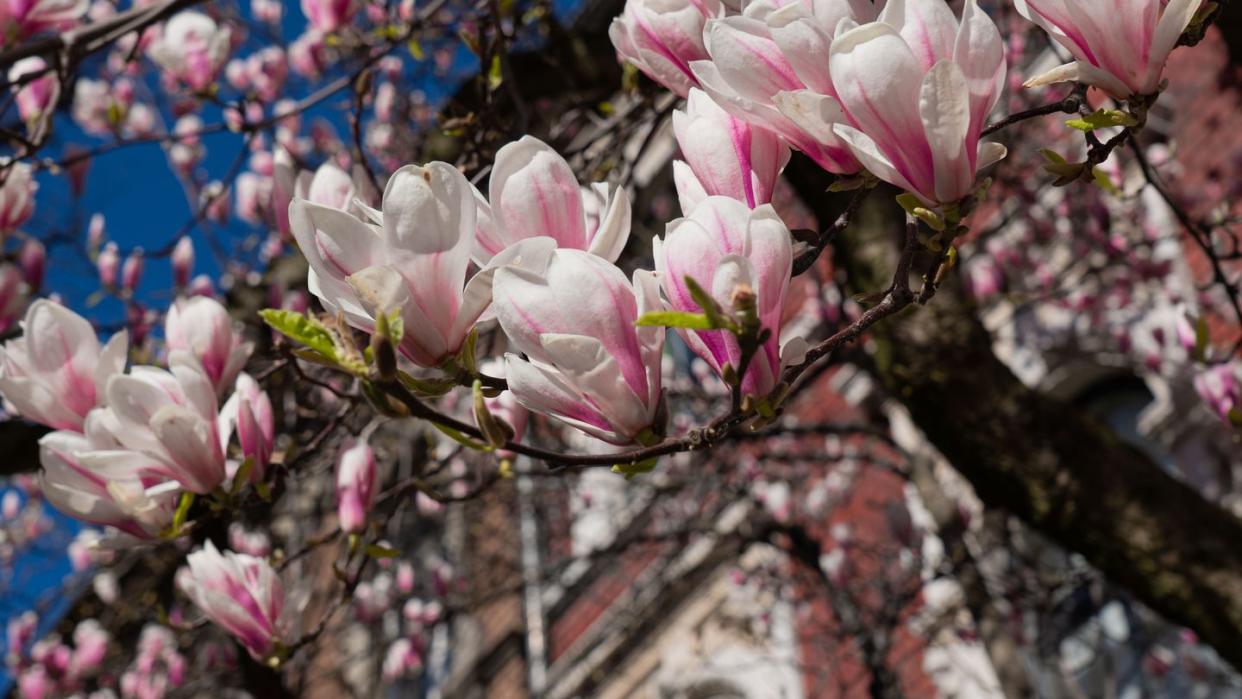
Not all trees need to be large in order to make a statement. Small trees – which are officially known as “dwarf trees” in garden parlance and don’t grow above 30 feet– can liven up a front yard with color, texture, and -- always important -- a bit of shade. Even better, compact trees can out perform larger specimens in a myriad of ways: Large trees can cost a small fortune and bring higher maintenance costs. If they’re grown too close to the house, they can be a fire hazard, and a larger root ball can wreak havoc on your walkways, beds, plumbing, and even your foundation.
Use small trees to can add another visual layer to your space. A flat lawn or expanse is just that, while a well-placed crabapple or Japanese myrtle will break up that horizontal line so the eye can dance from one visual point to another. Dwarf trees attract pollinators, hummingbirds, and songbirds, while fragrant and blooming branches can be clipped and brought inside in the spring for a stunning display. In short, small trees will make your garden look lively, help your senses can come alive, and your home’s curb appeal will benefit, too.
So which small trees should you consider planting? Here are fifteen options that will make your front garden stand tall.
While towering evergreen trees are certainly impressive, there's a lot to appreciate in choosing small trees for your front yard. Small trees, also known as dwarf trees, grow to just 30 feet tall at most. Their smaller stature requires less maintenance and presents fewer potential issues like falling limbs and large root balls that could disrupt the ground beneath your property. Plus, they just look beautiful.
Planting small trees also adds another visual layer to your space that changes with the seasons. A well-placed crabapple or juneberry tree, for instance, will flower in the springtime and provide lush shade in peak summer. Dwarf trees also tend to attract pollinators like bees, while fragrant and blooming branches can be clipped and brought inside in the spring for a stunning display. In short, small trees will make your garden look lively, help your senses come alive, and boost your home’s curb appeal. Read on to learn about these 15 small trees for your front yard that should you consider planting.
More outdoor inspiration:
Flowering Dogwood Tree
Flowering dogwood is an easy small tree to care for and produces heady clouds of white, pink, or red blooms in the spring, verdant leaves in the summer, fall foliage, and berries that will attract birds. With stout trunks and a pleasing crown of branches, flowering dogwoods like partial sun and moist earth that drains well. Keep in mind that dogwoods can get diseases like powdery mildew and don’t stand up well to pests, so resistant hybrids are your safest bet.
USDA Hardiness zones: 5 to 9
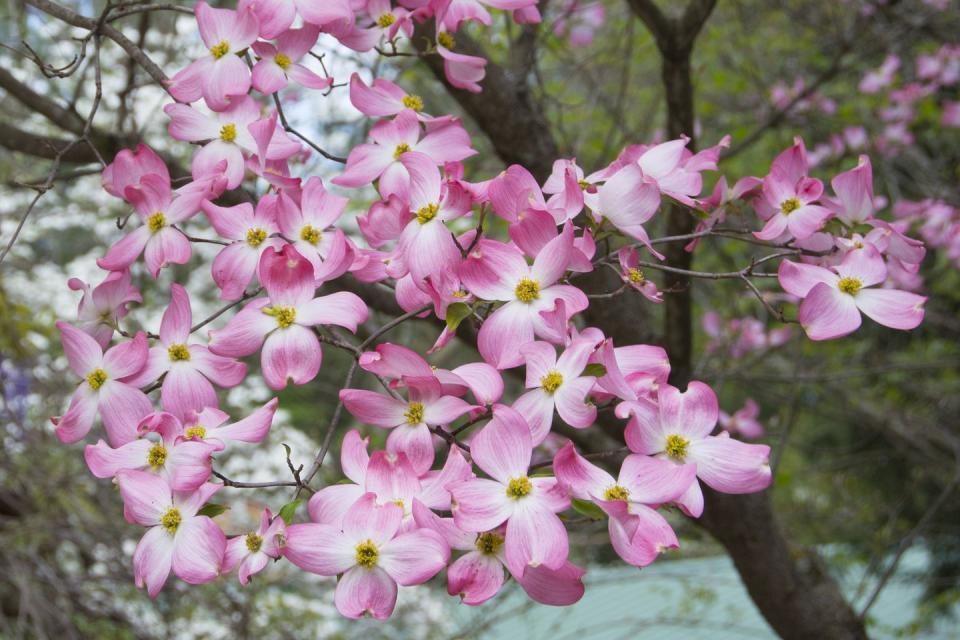
Strawberry Tree
Native to the Mediterranean, this adorable small tree features little round fruits that look a bit like strawberries if they grew from, well, a tree. Expect clusters of pink or white flowers that resemble lily of the valley and have a light fragrance, along with twisting branches and bark in gradients of green, yellow, and brown. While strawberry trees won't grow above 30 feet, be sure to allow room for the roots as they like to expand.
USDA Hardiness zones: 7 to 9
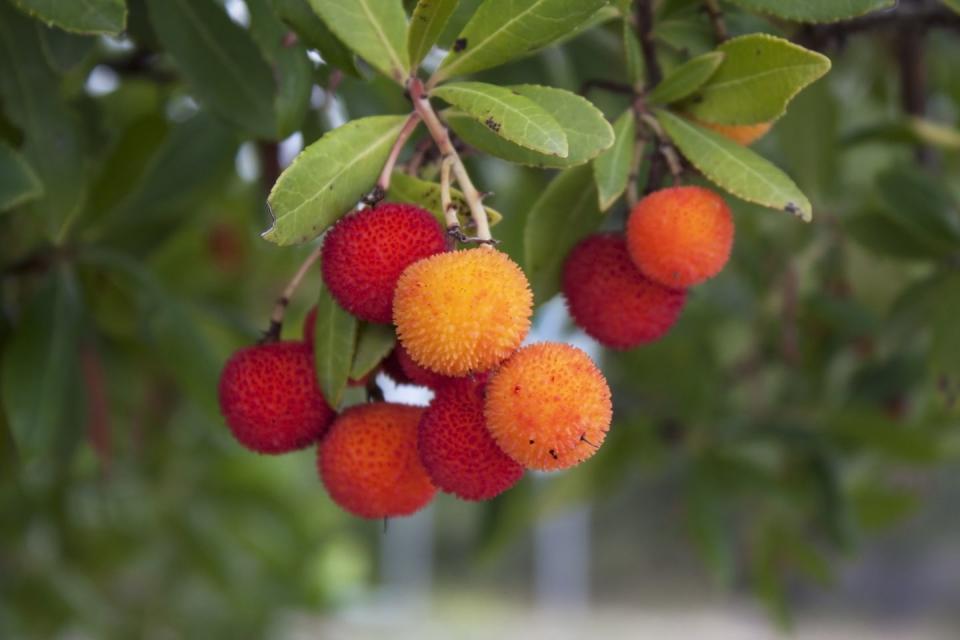
Crabapple Tree
A crabapple tree’s white, pink, or red spring flowers will turn to tart fruit by fall and attract songbirds. The Cinderella crabapple is particularly compact, the Calloway is often used to make jelly, and Louisa has delicate blooms and fruit that hang from bending branches until winter. While crabapples are edible—and even better when cooked—the seeds are toxic. There are plenty of varieties, so be sure to pick one that is best for your particular climate zone.
USDA Hardiness zones: 4 to 9
Related Story: Which Fruit Trees Can You Grow in Your Yard?
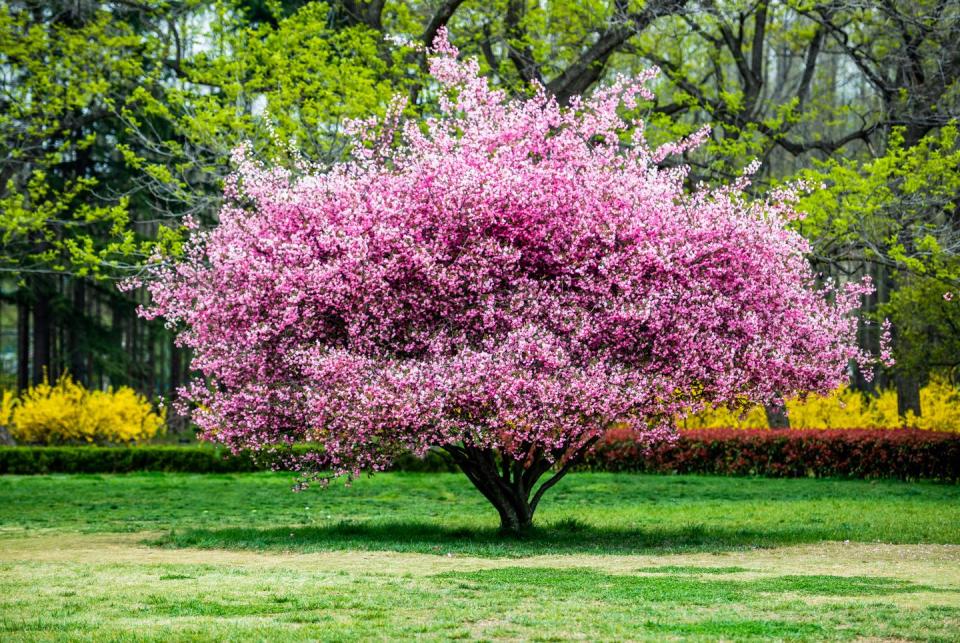
Japanese Maple Tree
With foliage colors that range from burgundy to coral to green, Japanese maples they’re as easy to take care of as they are on the eye. You’ll want to plant a Japanese maple in the spring or fall when you can avoid high temperatures or too much sun. Because the branches grow in a naturally pleasing shape, be sure not to over-prune this small tree.
USDA Hardiness zones: 5 to 9
Related Story: 9 Gorgeous Non-Green Plants You Can Grow for a Colorful Garden
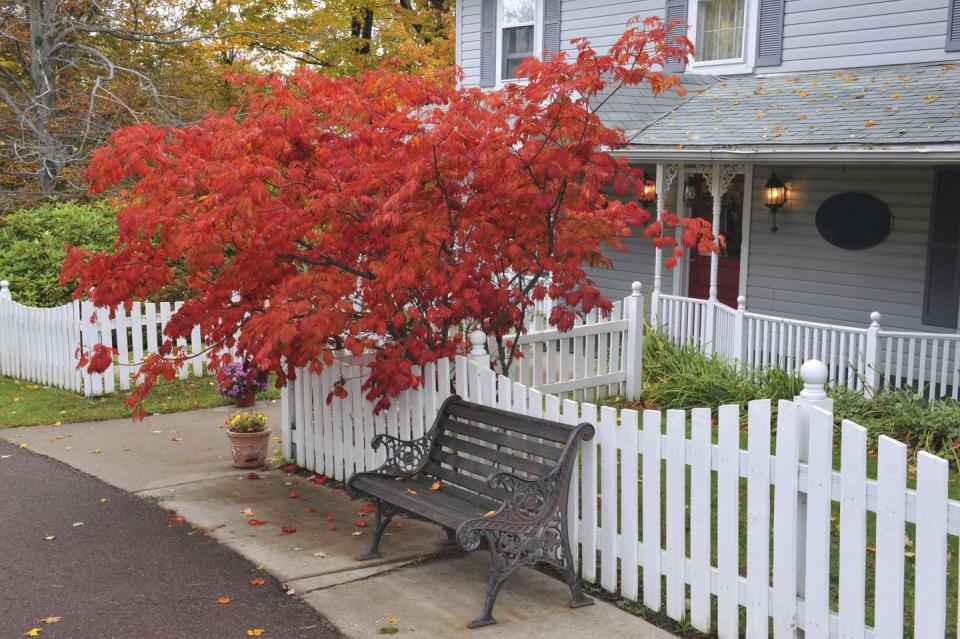
Smoke Tree
Here’s a small tree that looks exactly like its name. The smoke tree (or smoke bush) has billowing blooms that emerge in the summer. The flower clusters are called panicles (oats have them, too) and range in shades of white, pink, purple, and gold. Smoke trees are drought-tolerant but hate humidity. You can place cuttings in a vase on their own or in flower arrangements for a dramatic display.
USDA Hardiness zones: 5 to 9
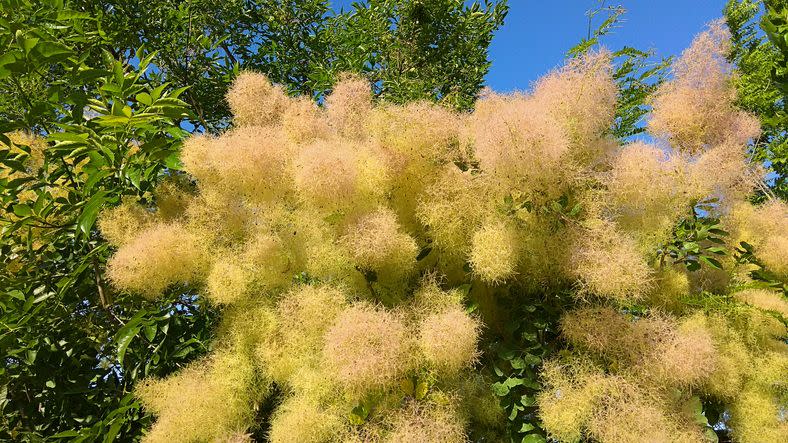
Juneberry Tree
With white spring flowers, summer fruit, and deep umber fall foliage, the juneberry is easy to grow and versatile in multiple hardiness zones. Juneberry trees like full sun to part shade, and the berries, which are such a dark purple they appear almost black, will be beloved by birds if you don’t pick them first to make jam or desserts. While cold-hardy, make sure to give your juneberry tree extra water during a drought.
USDA Hardiness zones: 2 to 5
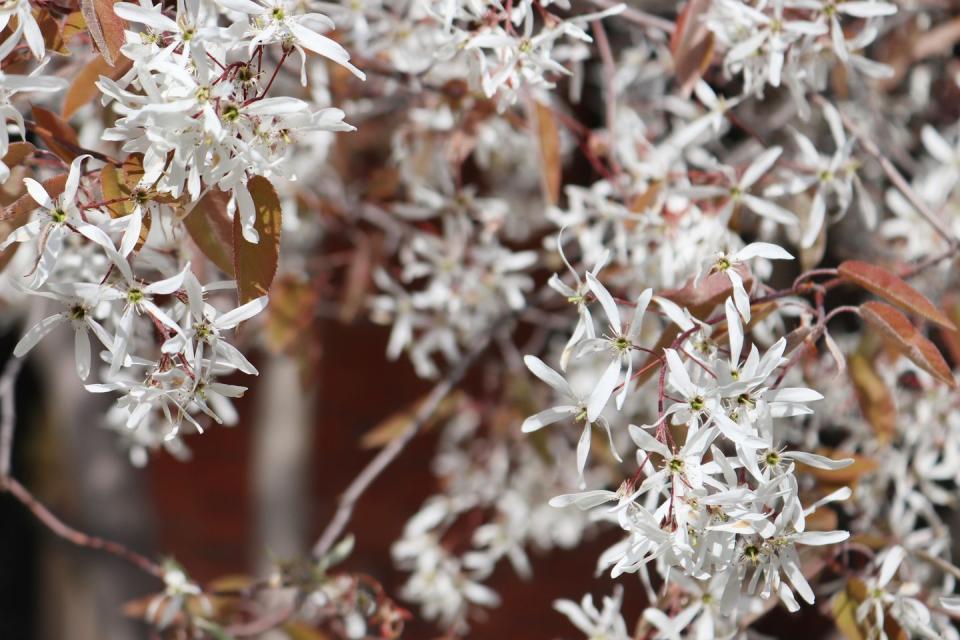
Grevillea Tree
Native to Australia and sometimes grown as a shrub, grevillea trees are evergreen with needle-like leaves and alien-looking flowers in oranges, reds, and pinks that will lure hummingbirds to your front yard. Excellent for screening exposed windows, this small tree works especially well in low-water gardens.
USDA Hardiness zones: 9 to 11
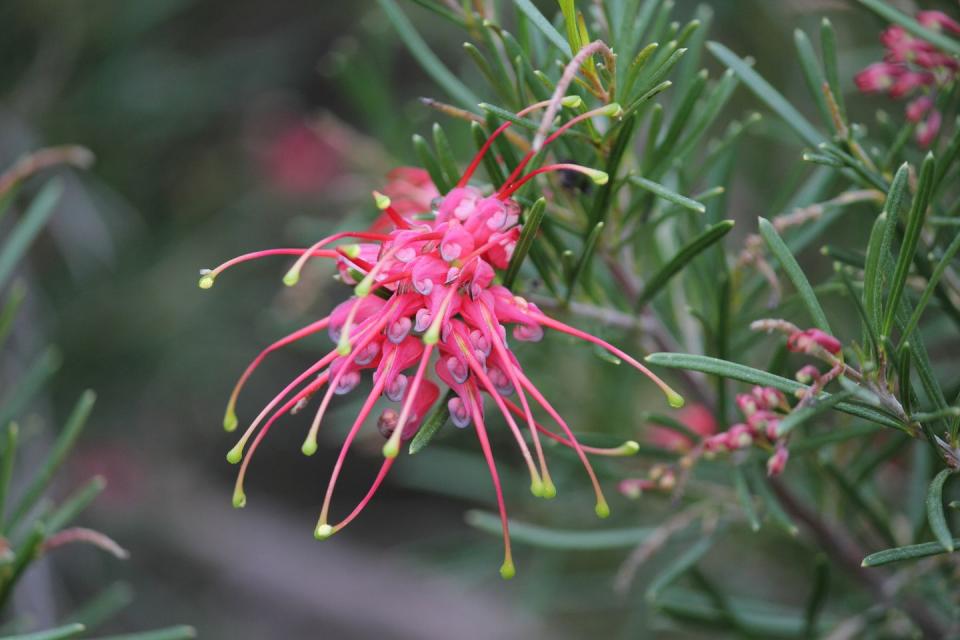
Saucer Magnolia Tree
With white and pink ombré blooms shaped like cups, a former officer under Napoleon Bonaparte created this hybrid of the Japanese lily magnolia and lilytree. Technically a shrub that can be pruned into a tree shape, saucer magnolias like well-drained soil, plenty of water, and full sun. They are prone to leaning, so prop yours up if it starts to tilt.
USDA Hardiness zones: 4 to 9
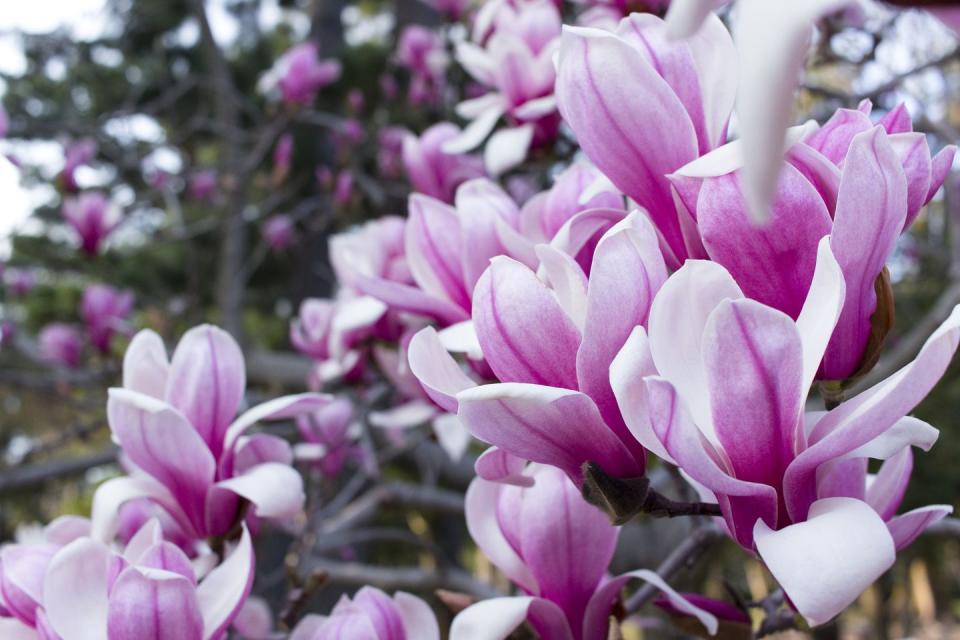
Umbrella Pine Tree
With a geometric shape like a partially closed umbrella, this conifer, considered sacred in Japan’s Kiso Valley, has attractive red-hued bark that peels like pencil shavings and dark needles that grow in whorls. Evergreen and slow-growing, umbrella pines top out at 30 feet, need mulch in warmer areas, and like full sun.
USDA Hardiness zones: 5 to 8
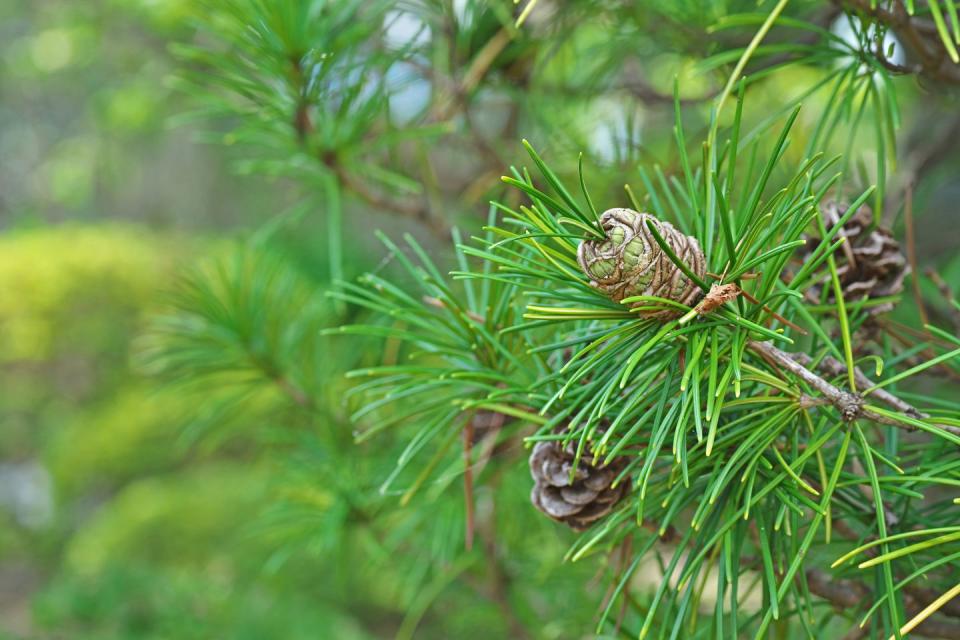
Eastern Redbud Tree
With pink, purple, or magenta flowers and heart-shaped leaves, these small trees are native to North America. Showy and easy to grow, the nectar-rich blooms are important to pollinators, look like pea blossoms, and spread over horizontal branches to stunning effect. Useful as understory trees, eastern redbuds work especially well when layered with large surrounding trees and on flat lawns. In the fall, keep an eye out for chickadees and northern bobwhites, who love the seeds.
USDA Hardiness zones: 4 to 9
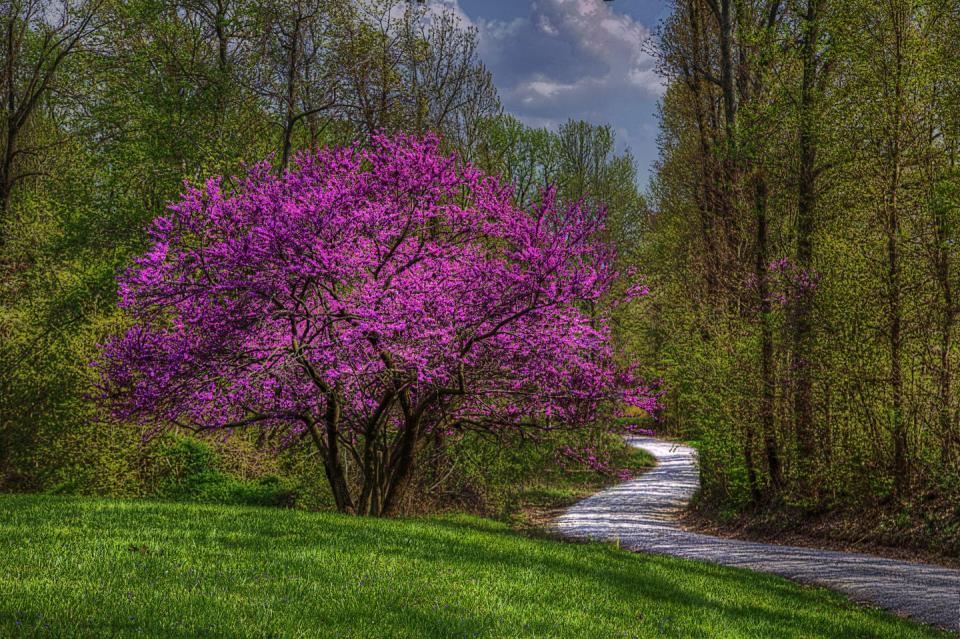
Franklin Tree
Last seen in the wild in 1803, planting a Franklin tree helps ensure its survival. William Bartram named this small tree after Benjamin Franklin, who was a friend of his father, the botanist John Bartram. It boasts sweet-smelling camellia-like flowers that bloom in the summer and glossy green leaves turn ruby, orange, and eggplant in the fall. Keep in mind that the Franklin tree can be tricky to grow due to its finicky moisture and temperature preferences.
USDA Hardiness zones: 5 to 9
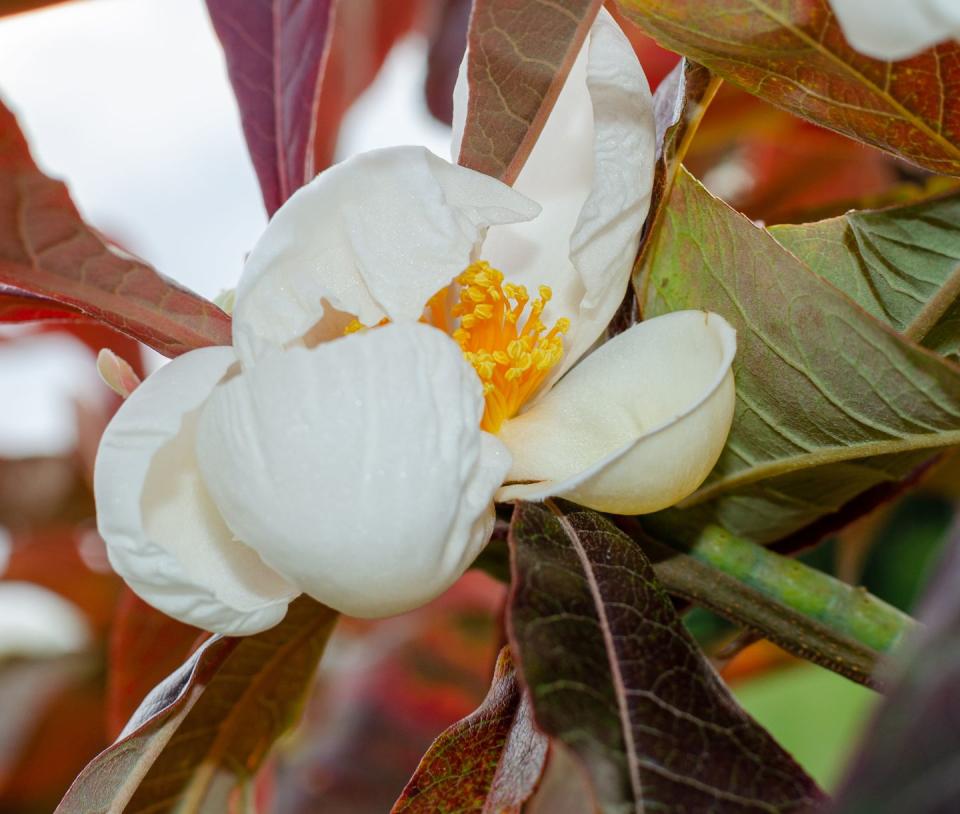
Paperbark Maple Tree
With upright branches and an oval crown, paperbark maples are prized for their scarlet red leaves in autumn and the fact that, unlike other maples, they stay small enough for less spacious yards. Peeling copper bark adds extra interest. Hedge maples are slow growers—bonsai enthusiasts love them—so be prepared to pay a premium for larger trees.
USDA Hardiness zones: 4 to 8
Related Story: The 10 Best Plants for Fall Color
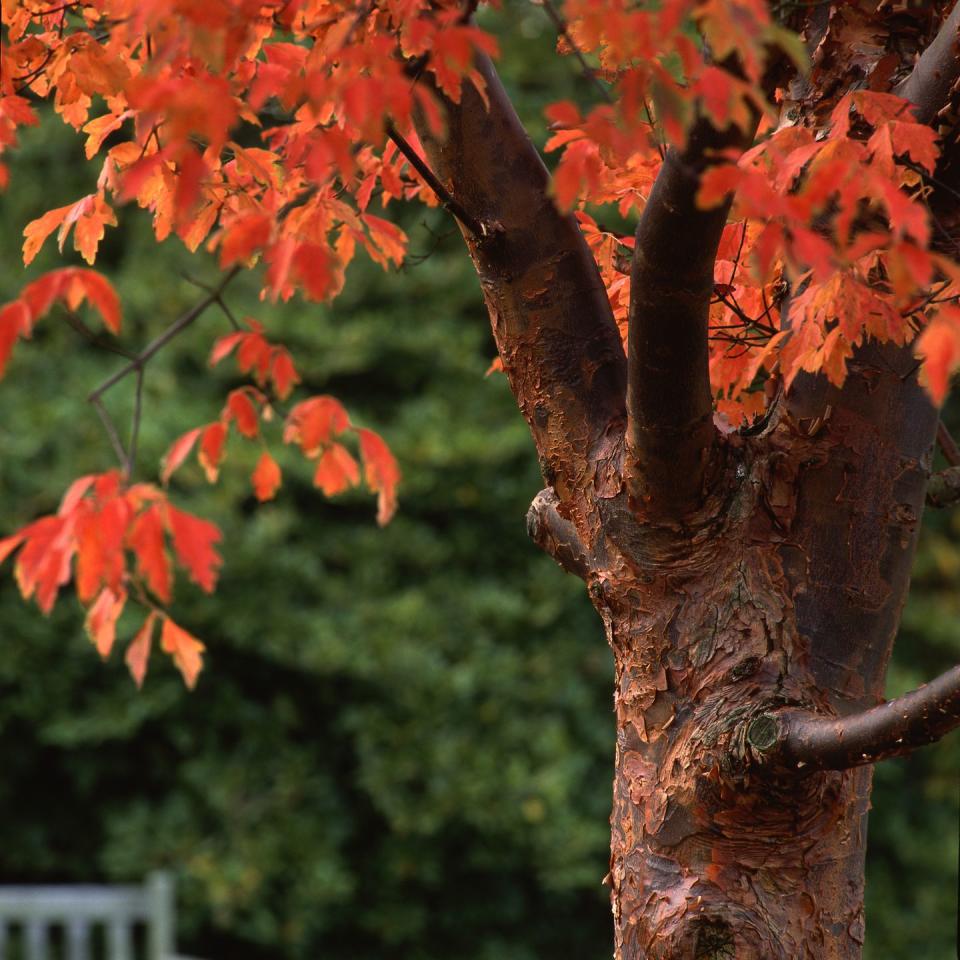
American Hophornbeam Tree
Your local birds will flock to the American hophornbeam’s papery fruits, which look like hops. Its serrated leaves turn a golden yellow in the fall. Hophornbeams work as an understory tree or on their own to provide shade, and they look perfect in woodland gardens and shaded landscapes.
USDA Hardiness zones: 3 to 9
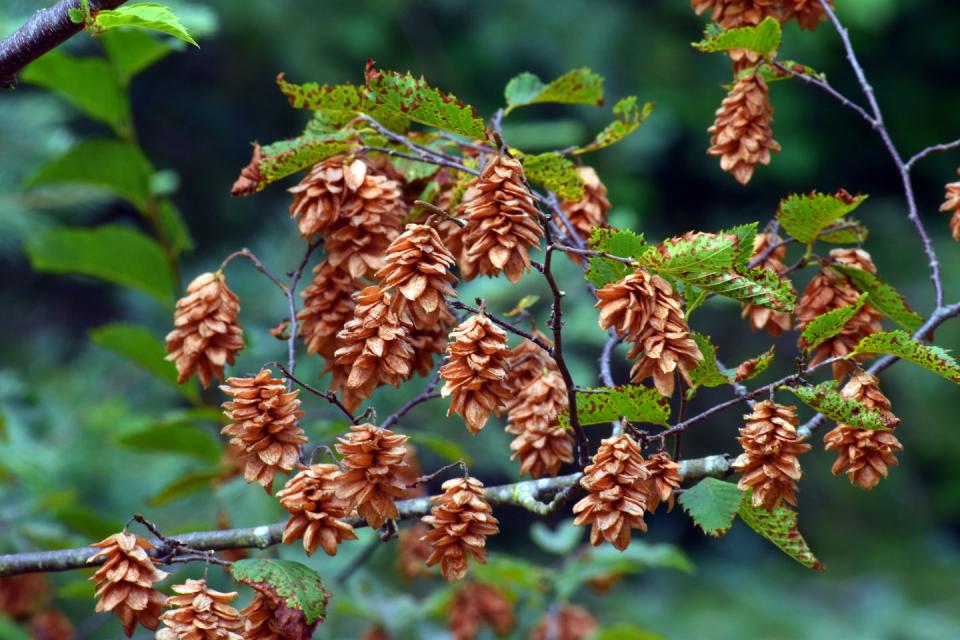
Japanese Camellia
There are thousands of cultivars of Japanese camellia, which is a small tree renowned for its dark glossy leaves and blooms that range in color from pure white to dark red. With the right care, Japanese camellia can live for hundreds of years.
USDA Hardiness zones: 7 to 9
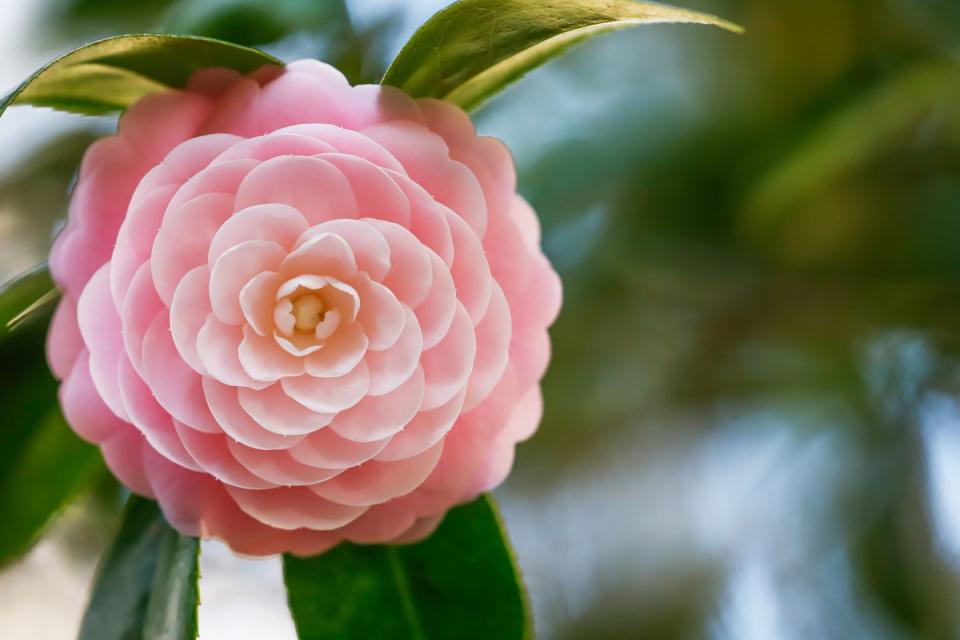
Fringe Tree
Also known as old man’s beard, fringe trees have small, bright white feathery blossoms in the spring and deep green foliage in summer. Versatile and cold-hardy to -30 degrees, the fringe tree works as both an understory tree and in full sun. Expect the flowers to delight, as they really do hang in a busy fringe pattern, while male and female fringe trees planted together will result in plum-like fruit.
USDA Hardiness zones: 5 to 9
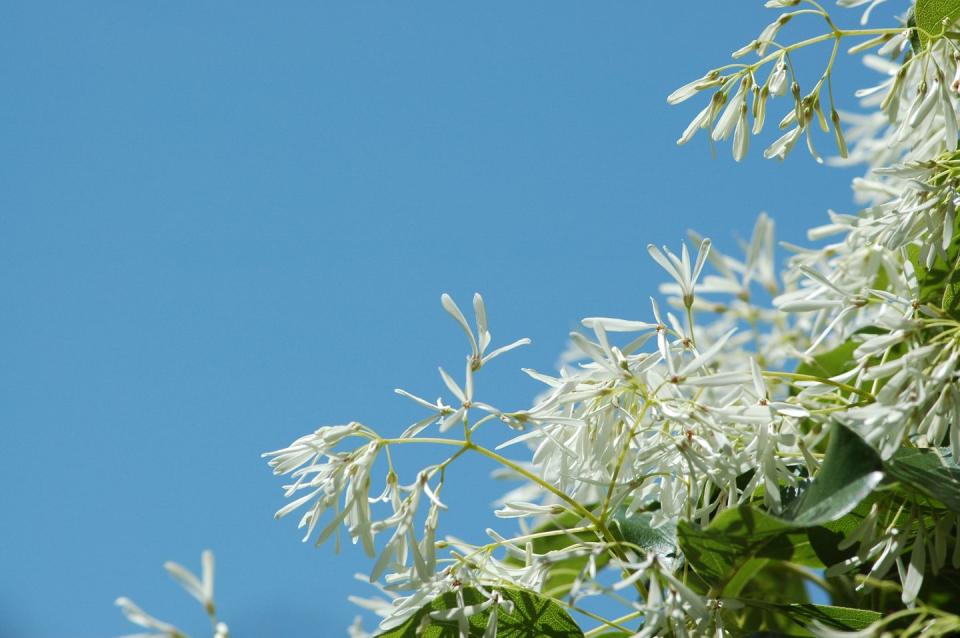
You Might Also Like


